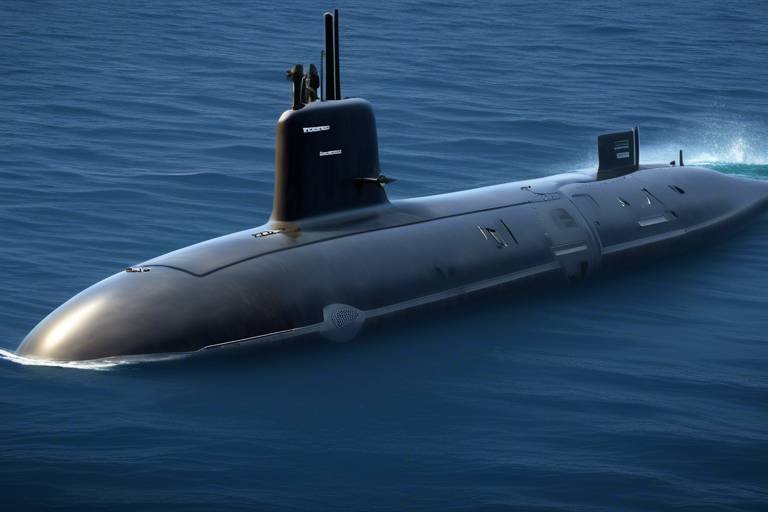Emerging Trends in Military Robotics for 2025
The landscape of military operations is rapidly evolving, and at the forefront of this transformation is the integration of robotics technology. As we look towards 2025, it’s clear that military robotics will not only enhance combat effectiveness but also redefine the very nature of warfare. With advancements in technology, we are witnessing a paradigm shift where robots are becoming indispensable assets on the battlefield. This article delves into the latest advancements, applications, and the future landscape of robotic technology in defense strategies.
One of the most significant trends is the rise of autonomous systems. These systems are designed to operate independently, performing tasks without the need for human intervention. Imagine a drone that can scout enemy territory or a ground vehicle that can transport supplies without a driver. This level of autonomy enhances operational efficiency and significantly reduces risks in combat scenarios. The implications are profound: fewer soldiers in harm's way and more strategic capabilities for military planners.
Furthermore, the integration of artificial intelligence (AI) is revolutionizing military robotics. AI enhances decision-making processes by enabling real-time data analysis, allowing robotic systems to adapt to dynamic battlefield environments. For instance, consider a scenario where a military robot can analyze incoming data from various sensors and make split-second decisions based on that information. This capability not only improves operational effectiveness but also increases the chances of mission success.
At the core of this AI integration are machine learning algorithms. These algorithms empower military robots to learn from their experiences, allowing them to improve over time. Just like a soldier who learns from each mission, these robots become smarter and more efficient with each operation. This continuous learning process is vital for enhancing mission success rates and adapting to unforeseen challenges.
Another exciting aspect of AI in military robotics is the use of predictive analytics. By analyzing patterns and data, military robots can anticipate enemy movements and optimize resource allocation. This predictive capability provides strategic advantages in planning and executing military operations, allowing commanders to stay one step ahead of their adversaries.
Moreover, natural language processing (NLP) is enabling better communication between human operators and robotic systems. This technology facilitates smoother coordination, improving overall mission execution in complex environments. Imagine a soldier giving verbal commands to a robot that understands and executes them flawlessly, enhancing the synergy between human and machine.
As we venture into the future, the importance of human-robot collaboration cannot be overstated. The success of military operations will increasingly rely on effective teamwork between soldiers and robots. This collaboration not only enhances operational capabilities but also reduces the cognitive load on personnel, allowing them to focus on critical tasks while robots handle repetitive or dangerous duties.
In addition to combat roles, robotic systems are making significant strides in logistics and supply chain automation. The transportation of supplies and equipment is being revolutionized by robots, streamlining operations and ensuring timely delivery to troops in the field. For example, consider the impact of warehouse robotics that automate inventory management. These systems reduce the time required to prepare supplies for deployment, enhancing overall operational efficiency.
Transport drones are another vital component of military supply chains. Capable of delivering crucial supplies to remote locations quickly and safely, these drones significantly improve logistical support in combat zones. Imagine a scenario where a transport drone delivers medical supplies to injured soldiers on the front lines within minutes, changing the course of a mission.
However, as military robotics become more advanced, the need for robust cybersecurity measures grows. Protecting sensitive data and preventing adversaries from exploiting vulnerabilities in robotic systems is paramount. Developing threat mitigation strategies is critical for safeguarding military robotics from cyber attacks. This includes focusing on encryption, secure communication protocols, and regular system updates to enhance resilience.
Finally, training personnel to understand and manage cybersecurity risks associated with military robotics is essential. As the battlefield becomes increasingly digital, maintaining operational integrity and ensuring successful mission outcomes will depend on the preparedness of military personnel in navigating these challenges.
- What are the main benefits of military robotics? Military robotics enhance operational efficiency, reduce risks to personnel, and improve decision-making capabilities in complex environments.
- How does AI improve military robotics? AI allows robots to analyze data in real-time, adapt to changing conditions, and learn from previous experiences, making them more effective in missions.
- What role does cybersecurity play in military robotics? Cybersecurity is crucial for protecting sensitive data and ensuring the integrity of robotic systems against potential cyber threats.
- How do transport drones impact military logistics? Transport drones enable rapid delivery of supplies to remote locations, significantly improving logistical support and operational efficiency in combat zones.

Autonomous Systems
This article explores the latest advancements in military robotics, focusing on innovations, applications, and the future landscape of robotic technology in defense strategies by 2025.
The rise of is transforming military operations in ways we never thought possible. Imagine a battlefield where drones and ground vehicles can perform tasks without a single human hand guiding them. These systems are not just a trend; they represent a fundamental shift in how we approach warfare. By enhancing efficiency and reducing risks in combat scenarios, autonomous systems are changing the game. They can scout enemy positions, transport supplies, and even engage in combat—all while minimizing human casualties.
One of the most exciting aspects of autonomous systems is their ability to operate in environments that are too dangerous for human soldiers. For instance, consider a scenario where a reconnaissance drone is sent into a hostile area. Instead of risking lives, the drone can gather critical intelligence and return to base, all while being controlled by sophisticated algorithms. This not only saves lives but also allows for a more strategic approach to military operations.
Moreover, the integration of sensors and advanced navigation systems means that these autonomous machines can adapt to changing conditions in real-time. They can make decisions based on the data they collect, allowing for a level of responsiveness that is unparalleled in traditional military strategies. For example, if an autonomous ground vehicle encounters unexpected obstacles, it can reroute itself without human intervention, ensuring that missions are completed efficiently and effectively.
Of course, the implementation of these systems is not without challenges. There are ethical considerations, such as the implications of machines making life-or-death decisions. Furthermore, the reliability of these systems in high-stakes situations must be rigorously tested. However, the potential benefits are immense, and as technology advances, the military's reliance on autonomous systems is only expected to grow.
To illustrate the impact of autonomous systems, let's take a look at some key applications:
| Application | Description |
|---|---|
| Reconnaissance Drones | Used for gathering intelligence in hostile areas without risking human lives. |
| Logistics Vehicles | Autonomous vehicles that transport supplies, ensuring timely delivery to troops. |
| Combat Robots | Robots designed to engage in combat, reducing the need for human soldiers in dangerous situations. |
As we look ahead to 2025, it’s clear that the future of military operations will heavily involve these autonomous systems. They promise to not only enhance operational capabilities but also redefine the very nature of warfare. The question is not whether we will see more of these systems, but how quickly they will become integral to our defense strategies.
- What are autonomous systems in military robotics?
Autonomous systems are machines that can operate independently without human intervention, performing tasks such as reconnaissance, logistics, and combat. - How do autonomous systems enhance military operations?
They increase efficiency, reduce risks to human soldiers, and allow for real-time decision-making in dynamic environments. - What challenges do autonomous systems face?
Challenges include ethical considerations, the reliability of technology, and the need for rigorous testing in high-stakes situations.
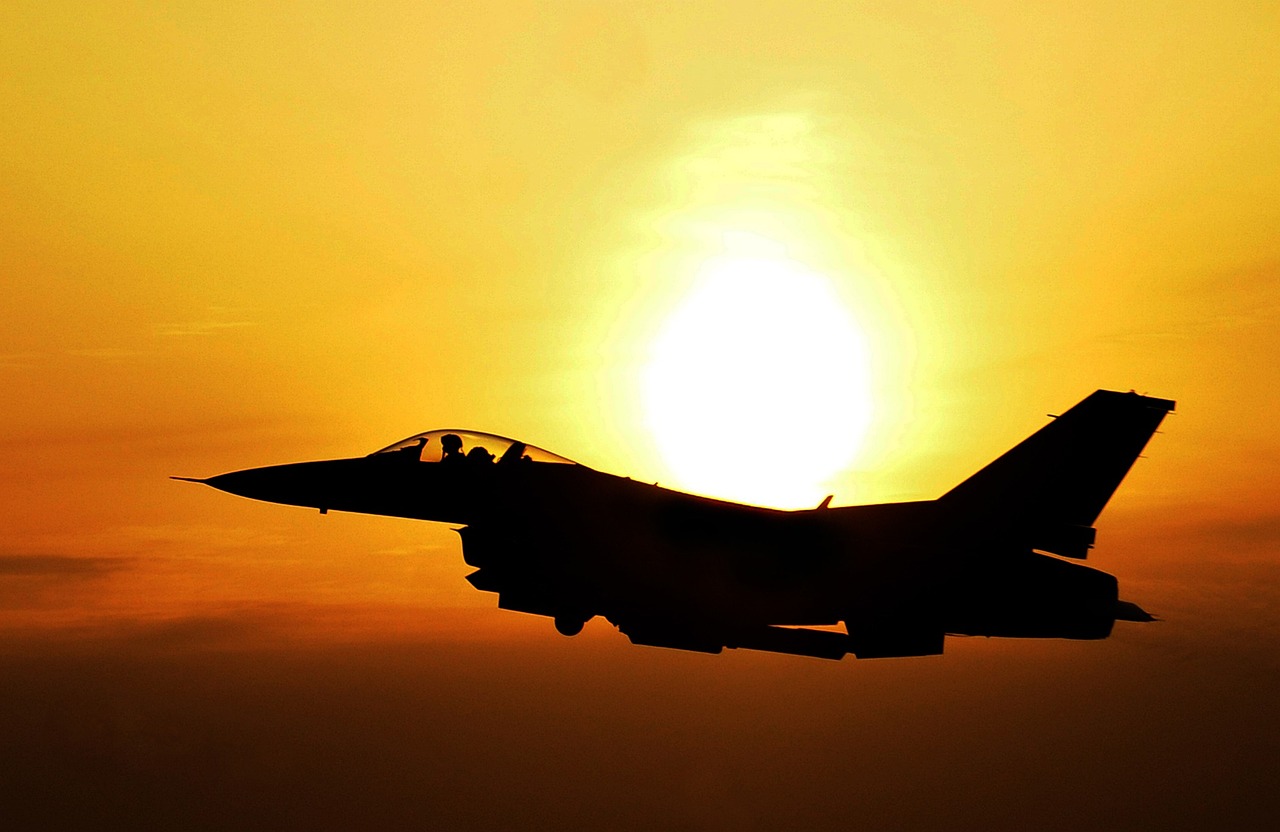
AI Integration
The integration of artificial intelligence (AI) into military robotics is nothing short of revolutionary. Imagine a battlefield where decisions are made in the blink of an eye, where machines analyze data faster than any human could dream of. This is the reality that AI is crafting for military operations. With AI, robotic systems can process vast amounts of information, learn from their surroundings, and adapt to ever-changing conditions on the ground. It’s like giving these machines a brain that can think and react almost autonomously, which is crucial in high-stakes situations.
One of the most exciting aspects of AI integration is its ability to enhance decision-making processes. For instance, during a mission, a robotic system equipped with AI can assess real-time data from various sources—like satellite imagery, drone feeds, and ground sensor inputs—to provide commanders with actionable insights. This means that military leaders can make informed decisions more quickly, potentially turning the tide of a conflict. The speed and accuracy of AI-driven analysis can be the difference between success and failure in combat scenarios.
Moreover, AI empowers military robots to operate effectively in dynamic environments. These systems utilize machine learning algorithms that allow them to learn from past experiences and improve their performance over time. Think of it as a soldier training for years to become a master in their field; similarly, military robots become increasingly effective as they gather more data and refine their operational strategies. This adaptability is particularly vital in unpredictable battlefield conditions where flexibility can mean survival.
At the core of AI integration are machine learning algorithms. These algorithms enable military robots to analyze patterns and make predictions based on historical data. For example, if a robotic drone has been deployed multiple times in a specific area, it can learn the best flight paths, identify potential threats, and optimize its surveillance techniques. Over time, this continuous learning process enhances the robot's operational effectiveness, ultimately leading to higher mission success rates.
Another fascinating application of AI in military robotics is through predictive analytics. This technology allows military leaders to anticipate enemy movements and optimize resource allocation. By analyzing data from previous engagements and current troop movements, AI systems can forecast potential threats and recommend strategic responses. This proactive approach not only enhances military readiness but also provides a significant tactical advantage in planning and executing operations.
AI's capabilities extend beyond data analysis; it also includes natural language processing (NLP), which facilitates better communication between human operators and robotic systems. Imagine a scenario where a soldier can give verbal commands to a drone, and the drone understands and executes those commands efficiently. NLP bridges the gap between human intuition and robotic precision, making coordination smoother and enhancing mission execution, especially in complex environments where clear communication is paramount.
As we look toward the future, the integration of AI into military robotics is not just a trend; it’s a game-changer. The ability to make rapid decisions, learn from experiences, and communicate effectively will redefine military strategies. The collaboration between humans and AI-driven robots will not only enhance operational capabilities but also reduce the cognitive load on personnel, allowing them to focus on what they do best—leading and strategizing in the face of adversity.
- What role does AI play in military robotics? AI enhances decision-making, enables real-time data analysis, and improves operational effectiveness through machine learning and predictive analytics.
- How does machine learning improve military robots? Machine learning allows robots to learn from past experiences, adapt to new situations, and optimize their performance over time.
- What is predictive analytics in military robotics? Predictive analytics helps anticipate enemy movements and optimize resources, providing strategic advantages in military operations.
- How does natural language processing benefit military operations? NLP enables clearer communication between soldiers and robots, facilitating better coordination and mission execution.
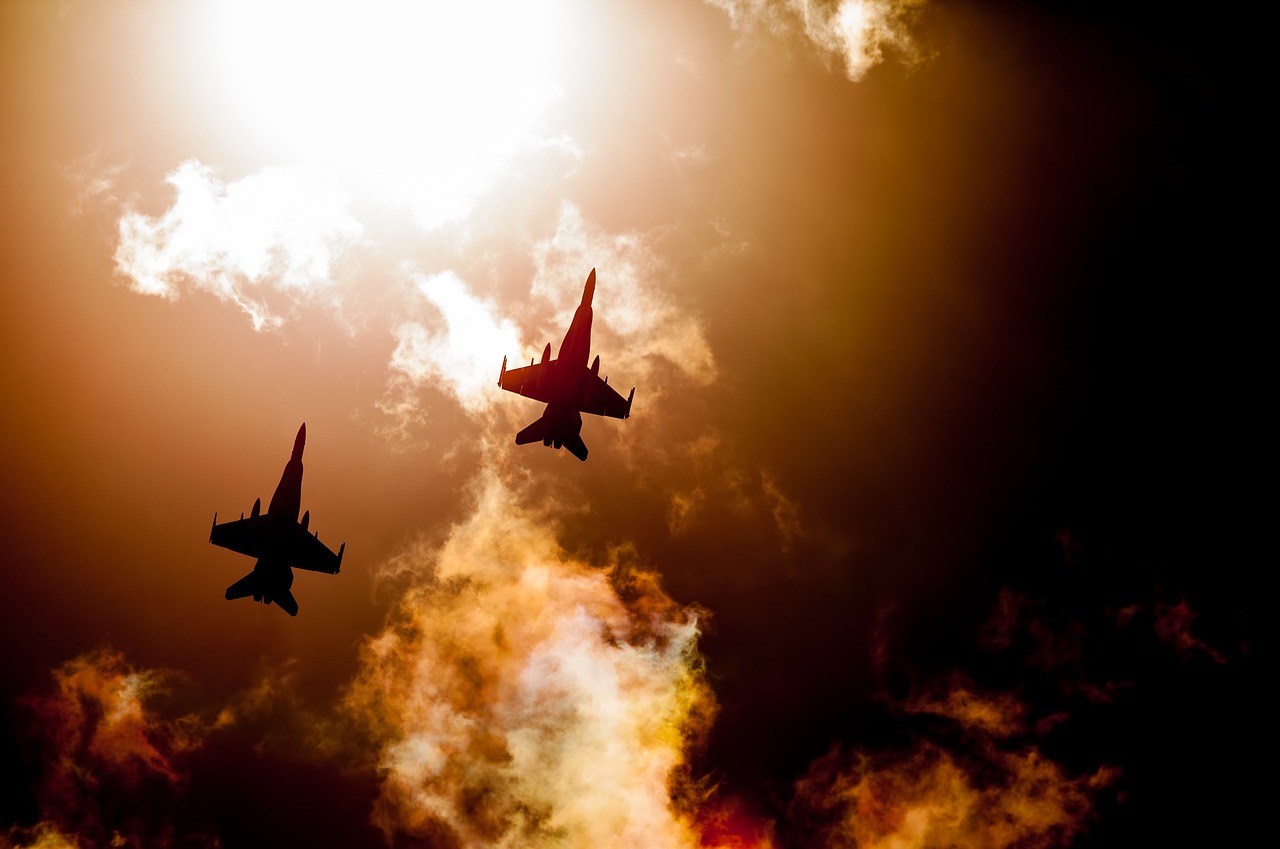
Machine Learning Algorithms
Machine learning algorithms are at the forefront of revolutionizing military robotics, acting as the brain behind these sophisticated machines. Imagine a robot that not only follows commands but also learns from its environment and experiences, becoming more efficient with each mission. This capability is akin to a soldier gaining experience on the battlefield; the more they engage, the better they adapt to the challenges they face. In military operations, this adaptability can mean the difference between mission success and failure.
These algorithms enable military robots to analyze vast amounts of data quickly, allowing them to make informed decisions in real-time. For instance, during a reconnaissance mission, a drone equipped with machine learning can identify targets, assess threats, and even predict enemy movements based on historical data. This level of intelligence significantly enhances operational effectiveness, making robotic systems invaluable assets on the modern battlefield.
One of the most exciting aspects of machine learning in military robotics is the concept of reinforcement learning. This technique allows robots to learn optimal behaviors through trial and error, much like how a child learns to ride a bike. By receiving feedback from their actions, these robots can refine their strategies and improve their performance over time. For example, a ground robot navigating a complex terrain can learn to avoid obstacles and find the most efficient routes without human intervention.
To give you a clearer picture, let's look at a simple table that illustrates the types of machine learning algorithms commonly used in military robotics:
| Algorithm Type | Description | Application in Military Robotics |
|---|---|---|
| Supervised Learning | Algorithms learn from labeled data to make predictions or decisions. | Target recognition and classification. |
| Unsupervised Learning | Algorithms identify patterns in data without labeled responses. | Data clustering for threat assessment. |
| Reinforcement Learning | Algorithms learn optimal actions through trial and error. | Pathfinding and obstacle avoidance. |
The integration of machine learning algorithms into military robotics not only enhances their operational capabilities but also reduces the cognitive burden on human operators. As these algorithms continue to evolve, we can expect to see robots that can autonomously adapt to changing battlefield conditions, making them more reliable and effective in high-stakes situations.
However, with these advancements come challenges. As military robots become smarter, the complexity of their systems increases, necessitating rigorous training for personnel who operate and manage these technologies. Understanding how these algorithms work is crucial for ensuring that soldiers can effectively utilize robotic systems in the field.
- What are machine learning algorithms? Machine learning algorithms are computational methods that allow systems to learn from data and improve their performance over time without explicit programming.
- How do machine learning algorithms benefit military robotics? They enhance decision-making, enable real-time data analysis, and allow robots to adapt to dynamic environments, improving operational effectiveness.
- What is reinforcement learning? Reinforcement learning is a type of machine learning where an agent learns to make decisions by receiving rewards or penalties based on its actions.
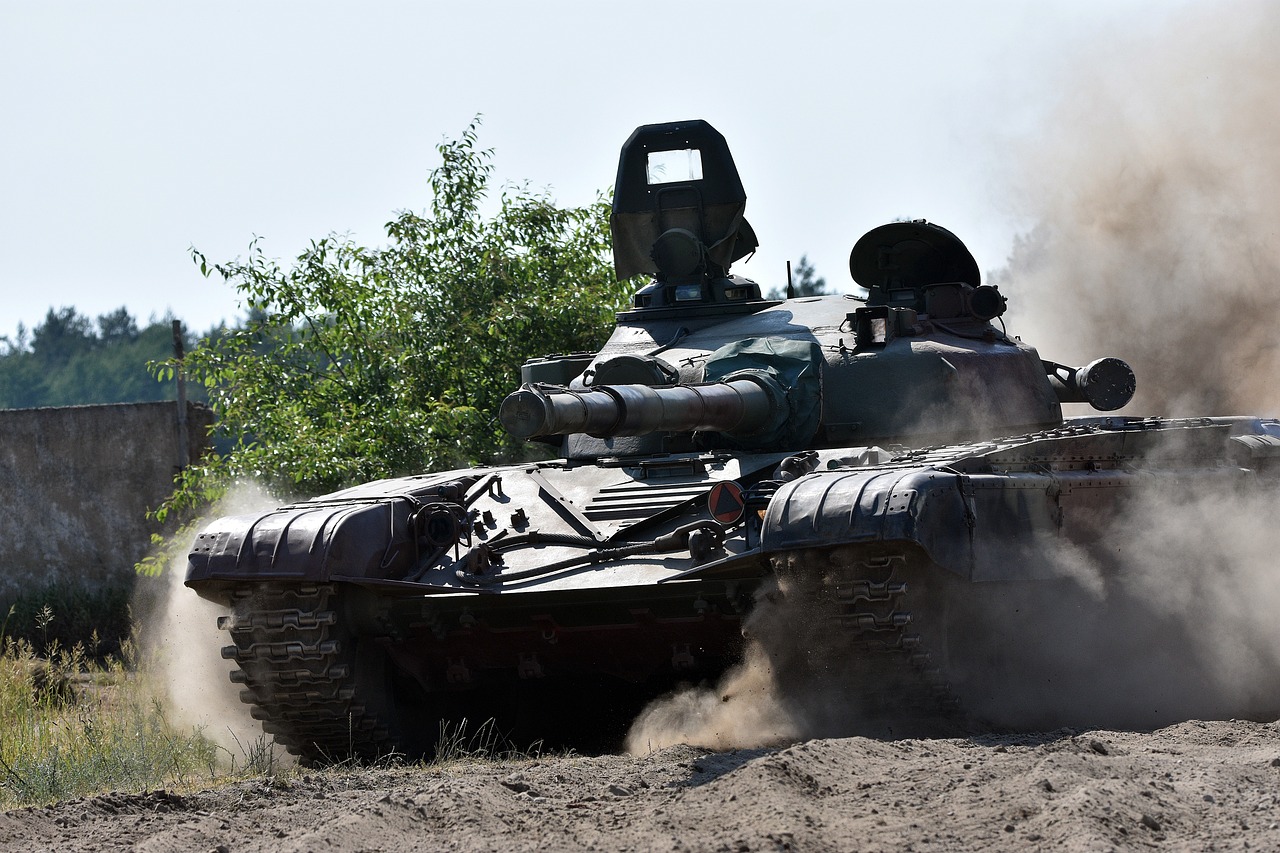
Predictive Analytics
In the fast-paced world of modern warfare, has emerged as a game-changer, offering military strategists the ability to foresee potential threats and opportunities on the battlefield. Imagine having a crystal ball that not only predicts enemy movements but also helps in making informed decisions about resource allocation. This technology leverages vast amounts of data gathered from various sources, including satellite imagery, intelligence reports, and even social media feeds, to create actionable insights. By analyzing patterns and trends, predictive analytics can provide a clearer picture of the operational landscape, enabling commanders to stay one step ahead of their adversaries.
One of the most significant advantages of predictive analytics in military operations is its capability to enhance situational awareness. For instance, by employing advanced algorithms, military forces can anticipate when and where an enemy might strike. This foresight allows for better preparation, whether that means deploying additional troops, repositioning assets, or even launching preemptive strikes. The integration of predictive analytics into military strategy can be likened to having a seasoned chess player who can predict the opponent's moves several steps ahead, thereby making more strategic decisions.
Moreover, predictive analytics can optimize resource allocation, ensuring that supplies and personnel are deployed where they are needed most. Consider a scenario where a military unit is operating in a remote area. By analyzing data on supply usage and troop movements, predictive models can suggest the most efficient routes for resupply missions, minimizing the risk of ambush and ensuring that soldiers have the necessary resources to complete their missions. This not only enhances operational efficiency but also significantly increases the chances of mission success.
However, the implementation of predictive analytics is not without its challenges. Data quality and integration are crucial factors that can affect the accuracy of predictions. If the data fed into the system is flawed or incomplete, the resulting analysis could lead to misguided strategies. Therefore, military organizations must invest in robust data collection and management systems to ensure the reliability of their predictive models. Additionally, as adversaries become more aware of these technologies, they may adopt countermeasures to disrupt predictive capabilities, making it essential for military forces to continuously evolve their analytical techniques.
In conclusion, is revolutionizing the way military operations are planned and executed. By providing insights that enhance situational awareness and optimize resource allocation, this technology empowers military leaders to make informed decisions in real-time. As we move towards 2025, the integration of predictive analytics into military strategies will likely become even more sophisticated, paving the way for a new era of warfare that prioritizes efficiency, effectiveness, and strategic foresight.
- What is predictive analytics in military operations?
Predictive analytics involves using data analysis techniques to forecast future events and trends, enabling military strategists to make informed decisions based on anticipated enemy actions and resource needs. - How does predictive analytics improve situational awareness?
By analyzing patterns and data from multiple sources, predictive analytics helps military forces anticipate enemy movements and potential threats, enhancing their readiness and response capabilities. - What are the challenges of implementing predictive analytics?
Challenges include ensuring data quality, integrating various data sources, and adapting to countermeasures from adversaries who may seek to undermine predictive capabilities. - Why is data quality important in predictive analytics?
Accurate predictions rely on high-quality data. If the data is flawed or incomplete, it can lead to poor decision-making and ineffective strategies.

Natural Language Processing
Natural Language Processing, or NLP, is a game-changer in the realm of military robotics. It acts as a bridge between humans and machines, enabling seamless communication in high-stakes environments. Imagine a soldier on the battlefield, surrounded by chaos, who can issue commands to a robotic unit just by speaking. This is the power of NLP. By processing and understanding human language, these robots can respond in real-time, adapting to the dynamic nature of combat scenarios. This capability not only enhances operational efficiency but also significantly reduces the cognitive load on personnel, allowing them to focus on critical tasks.
The integration of NLP into military robotics opens up a world of possibilities. For instance, consider a scenario where a soldier needs to coordinate with multiple robotic units. With NLP, they can simply articulate their needs, and the robots will interpret these commands, adjusting their actions accordingly. This level of interaction fosters a more intuitive working relationship between humans and machines, essential for success in complex environments. Furthermore, as NLP technology evolves, we can anticipate even more sophisticated interactions, where robots can understand context, intent, and even emotional cues from their operators.
Moreover, the implications of NLP extend beyond mere command execution. It can facilitate real-time data analysis and reporting. For example, a military robot equipped with NLP capabilities can relay critical information back to its operators, summarizing battlefield conditions or providing updates on mission status. This instant feedback loop enhances situational awareness, which is crucial for making informed decisions in the heat of battle. As a result, NLP not only empowers robotic systems but also enhances the overall effectiveness of military operations.
However, incorporating NLP into military robotics is not without challenges. One of the primary concerns is the accuracy of language interpretation, especially in noisy environments typical of combat zones. To address this, ongoing research is focusing on improving algorithms that can filter out background noise and focus on the speaker's voice. Additionally, training robotic systems to understand various dialects and terminologies used by different military branches is essential for ensuring effective communication.
In conclusion, the potential of Natural Language Processing in military robotics is vast and transformative. By enabling fluid communication between soldiers and robots, NLP not only enhances operational capabilities but also paves the way for a future where human-robot collaboration is the norm. As we move towards 2025, we can expect significant advancements in this area, ultimately leading to more efficient and effective military operations.
- What is Natural Language Processing?
NLP is a field of artificial intelligence that focuses on the interaction between computers and humans through natural language.
- How does NLP benefit military robotics?
NLP enables robots to understand and respond to human commands in real-time, enhancing communication and operational efficiency.
- What are the challenges of implementing NLP in military settings?
Challenges include ensuring accurate language interpretation in noisy environments and training systems to understand diverse dialects and terminologies.

Human-Robot Collaboration
As we navigate the future of military operations, the concept of is becoming more essential than ever. Imagine a battlefield where soldiers and robots work side by side, each complementing the other's strengths. This collaboration is not just about robots taking over tasks; it’s about creating a synergy that enhances operational capabilities and reduces the cognitive load on personnel. Think of it as a dance, where each partner knows their role, moving in harmony to achieve a common goal.
Robots equipped with advanced sensors and AI can assist soldiers in various ways. For instance, they can carry heavy equipment, scout dangerous areas, or even provide real-time data analysis during missions. This capability allows human operators to focus on critical decision-making rather than getting bogged down by mundane tasks. In many ways, robots act as force multipliers, amplifying the effectiveness of our armed forces.
Moreover, the integration of augmented reality (AR) can further enhance this collaboration. Imagine a soldier wearing AR goggles that provide real-time information from a nearby drone, displaying enemy positions or highlighting safe pathways through a hazardous zone. This kind of technology transforms the battlefield into a highly interactive environment where humans and robots communicate seamlessly. It’s like having a trusted partner who not only assists you but also anticipates your needs.
However, the success of human-robot collaboration hinges on effective communication. To facilitate this, developers are focusing on natural language processing (NLP) technologies that allow soldiers to interact with robots using voice commands. This makes it easier for operators to issue commands and receive updates without needing to navigate complex interfaces. The goal is to create a user-friendly experience that feels intuitive, much like chatting with a colleague rather than programming a machine.
As we look toward 2025, we can expect to see more training programs designed to prepare soldiers for this new collaborative environment. Understanding how to work alongside robots will be crucial, as will the ability to troubleshoot issues that may arise during operations. Just as pilots undergo rigorous training to operate advanced aircraft, soldiers will need to be adept at managing robotic systems on the battlefield.
In conclusion, the future of military operations will undoubtedly rely on effective human-robot collaboration. This partnership holds the promise of not only enhancing operational efficiency but also improving safety for our troops. As technology continues to evolve, we can expect to witness a new era in military strategy, where the lines between human and machine blur, creating a formidable force on the battlefield.
- What is human-robot collaboration in the military? It refers to the seamless integration of robotic systems and human soldiers working together to enhance operational capabilities.
- How do robots assist soldiers in the field? Robots can carry heavy loads, scout dangerous areas, and provide real-time data analysis, allowing soldiers to focus on critical tasks.
- What technologies facilitate communication between humans and robots? Technologies such as augmented reality (AR) and natural language processing (NLP) enable effective communication and interaction.
- Will soldiers need special training to work with robots? Yes, training programs will be essential to prepare soldiers for effective collaboration with robotic systems.

Logistics and Supply Chain Automation
The landscape of military logistics is undergoing a dramatic transformation, primarily driven by advancements in robotics and automation. As military operations become increasingly complex, the need for efficient and timely supply chain management has never been more critical. Robotic systems are stepping up to the plate, automating various aspects of logistics, from transportation to inventory management. This shift not only streamlines operations but also plays a vital role in ensuring that troops receive the necessary supplies when they need them most.
Imagine a battlefield where supplies are delivered with the precision of a well-oiled machine. This is becoming a reality thanks to the integration of advanced robotic technologies. For instance, automated vehicles are now capable of transporting essential goods across challenging terrains without human intervention. These vehicles can navigate through hostile environments, reducing the risk to personnel and enhancing the overall efficiency of supply chains. The use of robotic systems in logistics is not just about speed; it's also about accuracy and reliability.
One of the most exciting developments in this area is the rise of warehouse robotics. These systems are revolutionizing how military supplies are managed, with capabilities that allow for automated inventory tracking and management. Traditional methods of inventory management can be time-consuming and prone to human error. However, with robotic systems, the military can expect:
| Benefits of Warehouse Robotics | Description |
|---|---|
| Increased Efficiency | Robots can sort and retrieve items faster than human workers, significantly speeding up the supply chain process. |
| Reduced Errors | Automation minimizes the risk of human error, ensuring that the right supplies are sent to the right locations. |
| Cost Savings | By reducing labor costs and improving efficiency, military logistics can save substantial amounts of money. |
Moreover, transport drones are emerging as a crucial component in military supply chains. These drones are designed to deliver supplies quickly and safely, especially to remote or hard-to-reach locations. The ability to deploy transport drones allows military forces to maintain a steady flow of essential goods, such as food, ammunition, and medical supplies, directly to the front lines. This capability dramatically enhances logistical support in combat zones, ensuring that troops are well-equipped to face any challenges.
But what does this all mean for the future of military logistics? The integration of robotics and automation is not just a trend; it's a fundamental shift in how military operations will be conducted. As these technologies continue to evolve, we can expect to see even greater efficiency, accuracy, and reliability in logistics and supply chain management. The military is not just keeping pace with technological advancements; it's setting the stage for a new era of operational excellence.
- What are the main benefits of using robotics in military logistics?
Robotics improve efficiency, reduce human error, and lower operational costs, ensuring timely delivery of supplies. - How do transport drones enhance military supply chains?
Transport drones can deliver vital supplies to remote areas quickly and safely, improving logistical support in combat zones. - What role do warehouse robotics play in military operations?
Warehouse robotics automate inventory management, speeding up the preparation of supplies for deployment.

Warehouse Robotics
Warehouse robotics are not just a trend; they are a revolution in military logistics. Imagine a world where the heavy lifting of inventory management is handled by intelligent machines, allowing human personnel to focus on strategic tasks. These robots are designed to automate various processes, from sorting supplies to transporting them across vast storage spaces. The integration of robotics in military warehouses significantly reduces the time and labor involved in preparing supplies for deployment, thereby enhancing overall operational efficiency.
One of the most exciting aspects of warehouse robotics is their ability to work tirelessly without the fatigue that human workers experience. These machines can operate 24/7, ensuring that the military's supply chain never faces downtime. For instance, a robotic arm can quickly sort and package medical supplies, while autonomous vehicles navigate through the warehouse, delivering equipment to the right locations. This seamless operation not only speeds up logistics but also minimizes the risk of human error, which is crucial in high-stakes military environments.
Moreover, warehouse robotics are equipped with advanced sensors and AI algorithms that allow them to adapt to changing conditions. They can efficiently manage inventory levels, predicting when supplies need replenishing and ensuring that everything is in the right place at the right time. This predictive capability is a game-changer, as it allows military operations to maintain a constant state of readiness, ensuring troops have what they need when they need it.
To illustrate the impact of warehouse robotics, consider the following table that outlines key benefits:
| Benefit | Description |
|---|---|
| Increased Efficiency | Robots can process and transport goods faster than human workers, significantly speeding up logistics operations. |
| Reduced Labor Costs | Automation minimizes the need for manual labor, leading to cost savings in personnel expenses. |
| Enhanced Accuracy | Robotic systems reduce the likelihood of errors in inventory management, ensuring that supplies are correctly handled. |
| 24/7 Operation | Robots can work continuously without breaks, maintaining productivity around the clock. |
In conclusion, the future of military logistics is undeniably tied to the advancements in warehouse robotics. As these systems become more sophisticated, they will play a pivotal role in ensuring that military operations run smoothly and efficiently. The integration of robotics not only enhances supply chain management but also allows military personnel to concentrate on mission-critical tasks, ultimately leading to improved mission success rates.
- What types of robots are used in military warehouses? Military warehouses typically utilize autonomous vehicles, robotic arms, and inventory management systems to streamline operations.
- How do warehouse robots improve efficiency? They automate repetitive tasks, reduce the time taken for sorting and transporting supplies, and operate continuously without fatigue.
- Are there any risks associated with using robots in military logistics? While warehouse robots enhance efficiency, they also require robust cybersecurity measures to protect against potential threats.
- Can warehouse robotics adapt to changing inventory needs? Yes, many warehouse robots are equipped with AI and sensors that allow them to manage inventory levels and predict supply needs effectively.
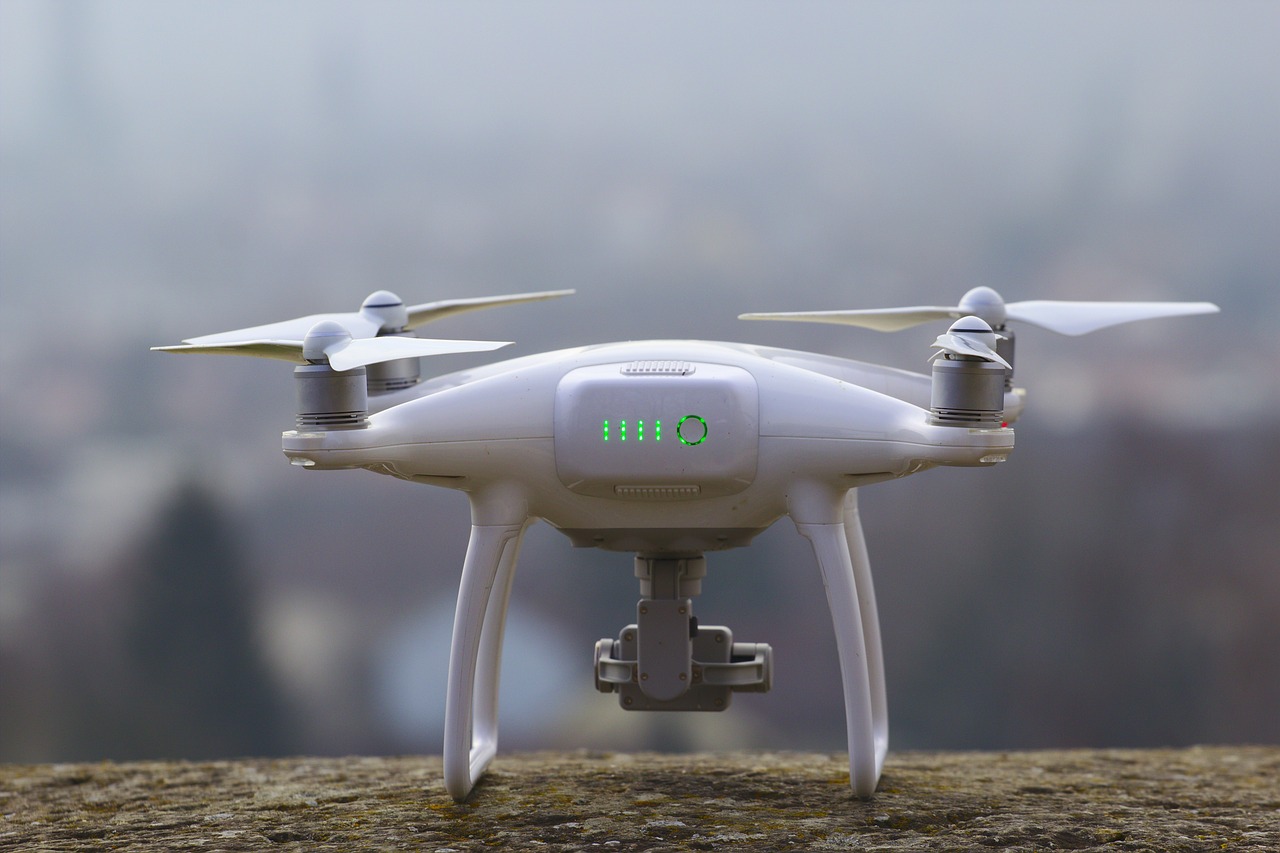
Transport Drones
Transport drones are rapidly becoming a game-changer in military logistics, revolutionizing how supplies and equipment are delivered to troops in the field. Imagine a scenario where critical resources can be transported swiftly and efficiently, reaching remote locations that were previously difficult to access. This is not just a concept; it's a reality that is unfolding right before our eyes. The integration of advanced drone technology into military operations is enhancing logistical support, particularly in combat zones where traditional transportation methods may falter.
These drones are designed to carry a variety of payloads, from food and medical supplies to ammunition and equipment. Their ability to navigate challenging terrains and adverse weather conditions makes them invaluable assets on the battlefield. Speed and efficiency are paramount in military operations, and transport drones excel in these areas. By minimizing the time it takes to deliver essential supplies, they significantly enhance operational readiness and troop morale.
Furthermore, the use of transport drones reduces the risk to personnel. In high-threat environments, sending a drone to deliver supplies can prevent soldiers from being exposed to potential ambushes or hostile engagements. This capability not only saves lives but also allows military planners to allocate resources more strategically. For instance, rather than relying on convoys that may be vulnerable to attack, military forces can utilize drones to ensure that supplies reach their destination safely and efficiently.
As the technology continues to evolve, the payload capacity and range of transport drones are expected to expand. Future iterations may include hybrid models that can switch between flying and driving, offering even greater versatility in various operational contexts. The ongoing development of autonomous navigation systems will also enable these drones to operate with minimal human oversight, further streamlining logistics operations.
In conclusion, transport drones are not just a fleeting trend; they represent a fundamental shift in how military logistics will be conducted in the coming years. Their ability to provide rapid, reliable, and risk-averse supply solutions will be crucial as military operations become increasingly complex and dynamic. As we look toward 2025 and beyond, the role of transport drones in military logistics will undoubtedly expand, paving the way for a more efficient and effective defense strategy.
- What are transport drones used for in the military?
Transport drones are primarily used to deliver supplies, equipment, and medical resources to military personnel in various operational environments. - How do transport drones enhance military logistics?
They improve speed and efficiency, reduce personnel risk, and allow for the quick delivery of essential supplies to remote or hostile locations. - What advancements can we expect in transport drone technology?
Future advancements may include increased payload capacity, autonomous navigation systems, and hybrid models that can operate on both land and air.

Cybersecurity Challenges
The rapid evolution of military robotics is nothing short of revolutionary, but with great innovation comes a host of challenges, particularly in the realm of cybersecurity. As these advanced systems become integral to defense strategies, the need to protect them from cyber threats is more critical than ever. Imagine a battlefield where the very robots designed to protect and serve can be hacked or manipulated by adversaries. This scenario is not just a plot from a sci-fi movie; it’s a tangible risk that military organizations must face head-on.
Military robotics rely heavily on interconnected systems, making them vulnerable to various cyber threats. From drones to ground vehicles, each robotic unit communicates with a centralized command, sharing sensitive data in real time. If an adversary gains access to this network, they could potentially disrupt operations or even turn the robots against their operators. Thus, ensuring the integrity and security of these systems is paramount.
To combat these challenges, military organizations are developing threat mitigation strategies. These strategies focus on several key areas:
- Encryption: Ensuring that all communications between robots and command centers are encrypted to prevent unauthorized access.
- Secure Communication Protocols: Implementing robust protocols that are resistant to interception and manipulation.
- Regular System Updates: Keeping software and firmware up to date to patch vulnerabilities and enhance security features.
Moreover, the human element cannot be overlooked. Training personnel to understand the intricacies of cybersecurity is essential for maintaining operational integrity. This training includes recognizing potential threats, understanding how to respond in the event of a cyber incident, and fostering a culture of vigilance. In an increasingly digital battlefield, every soldier must be equipped with the knowledge to safeguard their robotic allies.
As military robotics continue to advance, the cybersecurity landscape will also evolve. The integration of artificial intelligence and machine learning into these systems can provide enhanced security measures. For instance, AI can help identify unusual patterns of behavior that may indicate a cyber attack, allowing for swift responses to potential threats. However, this also means that adversaries will likely develop their own sophisticated methods to exploit vulnerabilities. The race for cybersecurity supremacy is on, and military organizations must stay one step ahead.
In conclusion, while military robotics offer unprecedented advantages in modern warfare, they also present significant cybersecurity challenges. Addressing these challenges requires a multifaceted approach that combines technological advancements with comprehensive training and preparedness. Only by prioritizing cybersecurity can military organizations ensure that their robotic systems remain reliable allies on the battlefield.
- What are the main cybersecurity risks associated with military robotics?
The main risks include unauthorized access to systems, data breaches, and the potential for adversaries to manipulate robotic systems.
- How can encryption help in securing military robotics?
Encryption protects sensitive data by making it unreadable to unauthorized users, thus securing communications between robots and command centers.
- What role does training play in cybersecurity for military personnel?
Training helps personnel recognize and respond to cybersecurity threats, ensuring they can effectively protect robotic systems in the field.

Threat Mitigation Strategies
As military robotics continue to advance at a breakneck pace, the importance of robust cybersecurity measures cannot be overstated. The integration of sophisticated technologies into military operations opens up a Pandora's box of vulnerabilities, making it imperative to implement effective threat mitigation strategies. These strategies are not merely an afterthought; they are a critical component of ensuring that our robotic systems remain secure and functional in the face of ever-evolving cyber threats.
One of the cornerstones of threat mitigation is the use of encryption. By encrypting communication between robotic systems and their operators, we can safeguard sensitive data from prying eyes. This is akin to locking your front door to keep intruders out. However, encryption alone is not enough. It must be complemented by secure communication protocols that establish a trustworthy channel for data exchange. Think of this as not just locking the door, but also installing a security system that alerts you to any suspicious activity.
Regular system updates are another essential strategy in the cybersecurity arsenal. Just like software on your personal computer, military robotic systems require frequent updates to patch vulnerabilities and enhance security features. A proactive approach to updates ensures that any newly discovered weaknesses are addressed before they can be exploited by adversaries. This is similar to getting routine check-ups to catch health issues before they escalate.
Additionally, developing a culture of cybersecurity awareness among personnel is crucial. Training programs should be established to educate military staff about the risks associated with military robotics and the importance of adhering to cybersecurity protocols. This training should cover topics such as recognizing phishing attempts, understanding the significance of strong passwords, and knowing how to respond to potential security breaches. Just as soldiers train for combat scenarios, they must also be prepared for the digital battlefield.
To further illustrate these strategies, consider the following table that outlines key components of effective threat mitigation:
| Strategy | Description | Importance |
|---|---|---|
| Encryption | Securing communication channels to protect sensitive data. | Prevents unauthorized access and data breaches. |
| Secure Communication Protocols | Establishing trustworthy channels for data exchange. | Ensures data integrity and confidentiality. |
| Regular System Updates | Frequent updates to patch vulnerabilities. | Addresses weaknesses before they can be exploited. |
| Cybersecurity Training | Educating personnel about cybersecurity risks. | Creates a vigilant workforce prepared for threats. |
In conclusion, the landscape of military robotics is fraught with challenges, particularly in the realm of cybersecurity. By implementing a comprehensive suite of threat mitigation strategies—ranging from encryption and secure communication to regular updates and personnel training—we can fortify our defenses against potential cyber threats. As we march towards a future where robots play an integral role in military operations, ensuring their security is not just an option; it is a necessity.
- What are the main threats to military robotics? Cyberattacks, unauthorized access, and data breaches are some of the primary threats to military robotic systems.
- How can encryption help in military robotics? Encryption protects sensitive data transmitted between robotic systems and their operators, making it difficult for adversaries to intercept or manipulate information.
- Why is personnel training important for cybersecurity? Training equips military personnel with the knowledge to recognize and respond to cyber threats, fostering a culture of vigilance and preparedness.
- What role do regular system updates play? Regular updates patch vulnerabilities in robotic systems, ensuring they remain secure against newly discovered threats.

Training and Preparedness
In the ever-evolving landscape of military robotics, are not just optional; they are essential. As robotic systems become more integrated into military operations, the personnel who operate and manage these technologies must be equipped with the necessary skills and knowledge to navigate the complexities of the digital battlefield. This involves not only understanding how to operate these advanced machines but also being aware of the cybersecurity risks that accompany them.
Imagine a soldier in the field, coordinating with a drone that delivers supplies or gathers intelligence. This soldier must be trained to understand the nuances of the drone's operation, from basic commands to troubleshooting potential issues. Moreover, they need to be prepared for any cyber threats that could compromise the mission. This dual focus on technical operation and cybersecurity awareness is what makes training programs vital.
To effectively prepare military personnel, training programs should include:
- Hands-on experience: Simulated environments where soldiers can practice operating robotic systems without the pressure of real-world consequences.
- Cybersecurity modules: Comprehensive courses that cover the latest threats and mitigation strategies, ensuring personnel are not just users but informed defenders of their systems.
- Collaborative exercises: Scenarios that require soldiers to work alongside robots, fostering teamwork and understanding of how to leverage robotic capabilities in various situations.
Furthermore, the training should be ongoing. As technology advances, so too should the training programs. Regular updates and refresher courses will help ensure that military personnel remain adept at using these systems and are aware of the latest cybersecurity protocols. This proactive approach to training not only enhances operational integrity but also boosts the confidence of personnel when engaging in missions that involve complex robotic systems.
In addition, it is crucial to foster a culture of adaptability and continuous learning within military ranks. Soldiers should be encouraged to share their experiences and insights regarding the use of robotics, creating a feedback loop that can inform future training programs. This collaborative environment not only enhances individual skill sets but also contributes to the overall effectiveness of military operations.
In conclusion, as military robotics continue to advance, the importance of comprehensive training and preparedness cannot be overstated. By investing in robust training programs that emphasize both operational skills and cybersecurity awareness, military forces can ensure that they are ready to face the challenges of tomorrow's battlefield.
- What is the importance of training in military robotics?
Training ensures that personnel are equipped with the necessary skills to operate and manage robotic systems effectively, while also being aware of cybersecurity risks. - How often should training programs be updated?
Training programs should be regularly updated to incorporate new technologies and emerging cybersecurity threats, ensuring personnel remain proficient and informed. - What types of training are most effective for military personnel?
Hands-on experience, cybersecurity education, and collaborative exercises are among the most effective training methods for military personnel working with robotics.
Frequently Asked Questions
- What are autonomous systems in military robotics?
Autonomous systems refer to drones and ground vehicles that can perform tasks without human intervention. These systems enhance efficiency and reduce risks during combat scenarios, allowing military operations to be conducted more safely and effectively.
- How is artificial intelligence integrated into military robotics?
Artificial intelligence (AI) is revolutionizing military robotics by improving decision-making processes and enabling real-time data analysis. This integration allows robotic systems to adapt to dynamic battlefield environments, making them more effective in various situations.
- What role do machine learning algorithms play in military robotics?
Machine learning algorithms are crucial for developing smarter military robots. They allow these robots to learn from their experiences and improve their operational effectiveness over time, which ultimately enhances mission success rates.
- What is predictive analytics, and how does it benefit military operations?
Predictive analytics helps military forces anticipate enemy movements and optimize resource allocation. By providing strategic advantages in planning and executing operations, it enhances overall mission effectiveness.
- How does natural language processing improve human-robot collaboration?
Natural language processing enables better communication between human operators and robotic systems. This technology facilitates smoother coordination and improves overall mission execution in complex environments, making collaboration more effective.
- What advancements are being made in logistics and supply chain automation?
Robotic systems are increasingly automating the transportation of supplies and equipment in military logistics. This streamlining ensures timely delivery to troops in the field, enhancing operational efficiency.
- How are warehouse robotics changing military logistics?
Warehouse robotics automate inventory management, significantly reducing the time required to prepare supplies for deployment. This advancement enhances overall operational efficiency, ensuring that troops have what they need when they need it.
- What are transport drones, and why are they important?
Transport drones are vital components in military supply chains, capable of delivering crucial supplies to remote locations quickly and safely. Their use significantly improves logistical support in combat zones, ensuring that resources reach personnel efficiently.
- What cybersecurity challenges do military robotics face?
As military robotics become more advanced, they face increasing cybersecurity challenges. Protecting sensitive data and preventing adversaries from exploiting system vulnerabilities is crucial for maintaining operational integrity.
- What strategies are in place for threat mitigation in military robotics?
Threat mitigation strategies focus on encryption, secure communication protocols, and regular system updates. These measures enhance the resilience of military robotics against cyber attacks, ensuring their effectiveness in the field.
- How important is training for personnel regarding cybersecurity in military robotics?
Training personnel to understand and manage cybersecurity risks associated with military robotics is essential. This knowledge helps maintain operational integrity and ensures successful mission outcomes in an increasingly digital battlefield.










